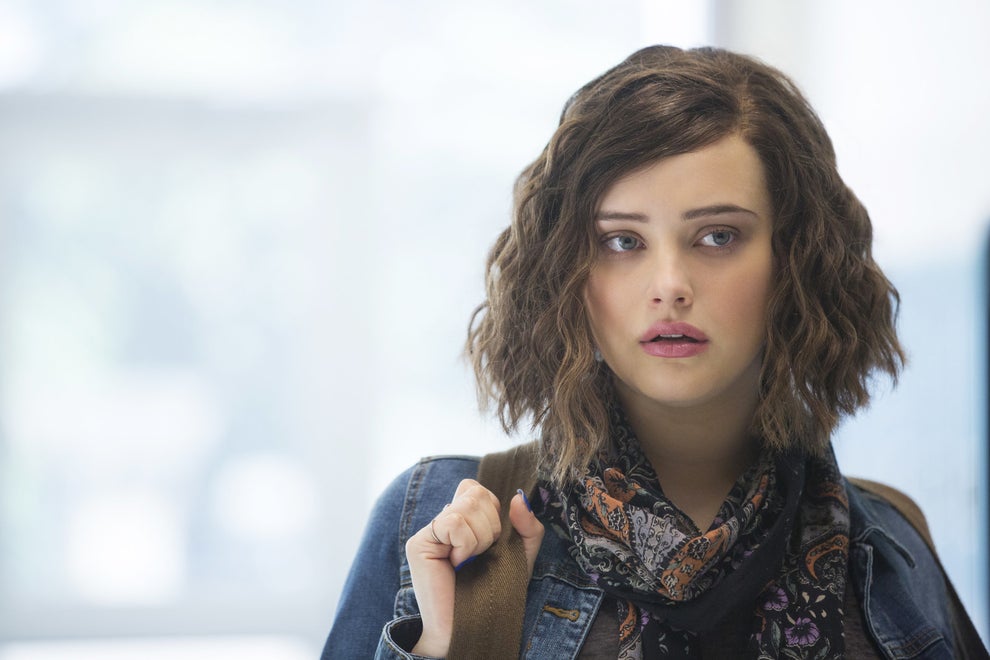
Hannah Baker (Katherine Langford) in the Netflix series 13 Reasons Why. Beth Dubber / Beth Dubber/Netflix
It’s been 10 years since Jay Asher’s first novel, Thirteen Reasons Why, made its debut. The book, which became a bestseller, tells the story of a high schooler, Hannah Baker, who kills herself and leaves behind a box of 13 cassette tapes that detail the reasons for her suicide and call out the people she holds responsible.
And just like the novel it’s based on, the TV adaptation, which debuted on Netflix last week, does not shy away from depicting suicide and rape in a raw and graphic way.
“It’s uncomfortable, but that’s OK,” Asher told BuzzFeed News. “It needs to be.”
Slut-shaming, harassment, and sexual assault are central to Asher’s story, most notably for Hannah (Katherine Langford) and her former friend Jessica (Alisha Boe). In one scene, Jessica’s boyfriend, Justin (Brandon Flynn), leaves her on her bed during a party because she’s too drunk to have sex. Bryce (Justin Prentice), a popular jock, walks in before Hannah, who inadvertently wound up in the room, can slip out. She jumps into a closet, freezes, and watches through slits in the door as Bryce unbuckles his belt, moves Jessica’s barely conscious body closer to the edge of the bed, pulls down her underwear, and thrusts himself into her. Throughout 13 Reasons Why (styled with a numeral for TV), versions of the scene are repetitively shown from the perspectives of different characters.
In Episode 12, Hannah unintentionally ends up at a party at Bryce’s house, and she finds herself alone in a hot tub with him. In a graphic scene, viewers watch Hannah physically resist Bryce as he approaches her. He pins her against the edge of the hot tub, pulls down her underwear, and pushes her head against the patio. The camera zooms in on her face and hands as her body becomes completely limp and her eyes glaze over while Bryce rapes her.
“I know some of you listening might think there was more I could’ve done or should’ve done,” Hannah says on one of the tapes. “But I’d lost control. And in that moment it felt like…it felt like I was already dead.”
Asher thinks it was “the best decision” to portray the sexual assaults in 13 Reasons Why as authentically as possible.
“Some people said it was too graphic, but it’s a graphic thing,” Asher said. “It’s like they’re saying it’s never appropriate to show it. And then if you’re saying it’s never appropriate to show it, then you’re saying it’s something to be hidden.
“If we’re doing this, it can’t be something that you can look away from or just gloss over in your mind,” he continued. “You have to be uncomfortable when you’re watching it; otherwise you’re not in her mind. In a way, it’s disrespectful if we say, ‘We know this stuff is happening, but we don’t want to be made uncomfortable by it.’”
When Asher originally wrote the scene in which Bryce rapes Hannah, he specifically had high school boys in mind as part of his audience.
“I wanted guys to be uncomfortable when they read it, and both the book and the TV show made a point of noting that Hannah never says no,” he said. “Because that’s what we always hear, right? ‘When a girl says no, she means no.’ But there are plenty of times when a girl’s afraid to say no for various reasons, and it doesn’t mean, ‘Oh, as long as they don’t say no, then everything’s fair game.’ You need to be a better person than that.”
Asher said he went back and forth with his publishing house over concerns that including graphic rape scenes would possibly lead to censorship, or the book to be banned, or for it to not be stocked in schools and libraries.
“I think what my publisher said was, ‘If you’re not uncomfortable when you’re reading that scene, then you’re not understanding what’s happening and you’re not going to be forced to grapple with it,’” he recalled.
And when it comes to how those scenes were shot for the Netflix series, Asher feels the same way: The vividness of these moments and their focus on the victim allows those who do relate to Hannah to feel seen.
“I’ve heard from so many people who identify with Hannah’s character and they’re like, ‘Wow, I’ve felt that way, I’ve had this happen,’” Asher said. “There’s this stress that is relieved when you realize somebody understands, and that’s only going to happen if you feel the person who’s writing the book or the people in the TV show aren’t holding back.”


